Top 20 Best & Most-Visited U.S National Parks For Upcoming Trips
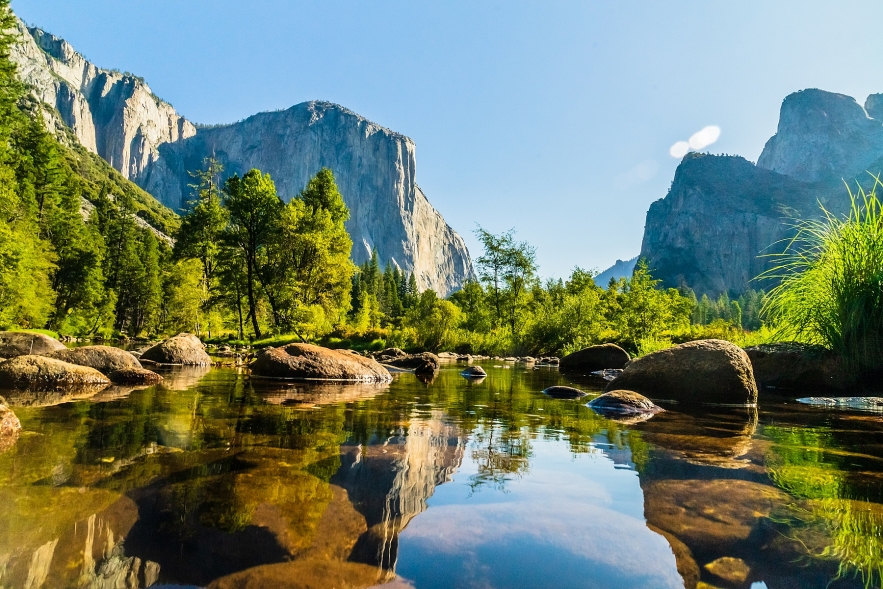 |
| Best National Parks in the U.S. You Should Visit Upcoming Trips |
According to an in-depth visitation report by the National Park Service (NPS), all US national parks received Roughly 297.1 million visits in the last year 2021.
The NPS said that of 423 parks in the National Park System, just 25 received more than 50 percent of the system’s total 297.1 million recreation visits in 2021. Last year’s visitation increased by 60 million over 2020 when COVID-19 shuttered facilities in most parks for at least part of the year.
National Park Service Director Chuck Sams said:“We’re happy to see so many visitors returning to iconic parks like Yellowstone and Yosemite, but there are hundreds more that should be on everyone’s bucket list. Whatever experience you’re looking for in 2022, national parks are here to discover.”
List of The top 20 most visited US National Parks
1.Blue Ridge Parkway: 15.9 million
2.Great Smoky Mountains National Park: 14.1 million
3.Golden Gate National Recreation Area: 13.7 million
4.Gateway National Recreation Area: 9.1 million
5.Lake Mead National Recreation Area: 7.6 million
6.George Washington Memorial Parkway: 6.8 million
7.Natchez Trace Parkway: 6.4 million
8.Lincoln Memorial: 5.8 million
9.Gulf Islands National Seashore: 5.5 million
10.Zion National Park: 5 million
11.Chesapeake and Ohio Canal National Historical Park: 5 million
12.Yellowstone National Park: 4.9 million
13.Grand Canyon National Park: 4.5 million
14.Rocky Mountain National Park: 4.4 million
15.Delaware Water Gap National Recreation Area: 4.3 million
16.Acadia National Park: 4 million
17.Cape Cod National Seashore: 4 million
18.Grand Teton National Park: 3.9 million
19.World War II Memorial: 3.7 million
20.Vietnam Veterans Memorial: 3.6 million
*****
Fast-Facts Best & Most-Visited U.S National Sites
-Forty-four parks set a record for recreation visits in 2021.
-Six parks broke a visitation record they set in 2020.
-Blue Ridge Parkway remained the most-visited park in the National Park System.
-Great Smoky Mountains National Park set a visitation record in 2021 and passed 14 million recreation visits for the first time.
-Five parks began reporting official visitor statistics for the first time: Alagnak Wild River (Alaska), Camp Nelson National Monument (Ky.), Medgar and Myrlie Evers Home National Monument (Miss.), Tule Springs Fossil Beds National Monument (Nev.), and World War I Memorial (District of Columbia).
-In 2021, some parks operated with limited capacities or indoor space restrictions, but most were open to visitors. Seven parks—all of them historic sites in urban areas—remained closed throughout 2021 due health and safety concerns related to COVID-19.
-Recreation visitor hours dipped from 1.43 billion in 2019 to 1.36 billion in 2021, a 5% decrease.
-297,115,406 recreation visits
-1,356,657,749 recreation visitor hours
-12,745,455 overnight stays (recreation + non-recreation)
-Three parks had more than 10 million recreation visits – Blue Ridge Parkway, Great Smoky Mountains National Park, and Golden Gate National Recreation Area
-Eleven parks had more than five million recreation visits – up from seven parks in 2020 and equal to the number of parks in 2019
-73 parks had more than one million recreation visits (19% of reporting parks) - up from 60 parks in 2020 and down from 80 parks in 2019
-25% of total recreation visits occurred in the top eight most-visited parks (2% of all parks in the National Park System)
-50% of total recreation visits occurred in the top 25 most-visited parks (6% of all parks in the National Park System)
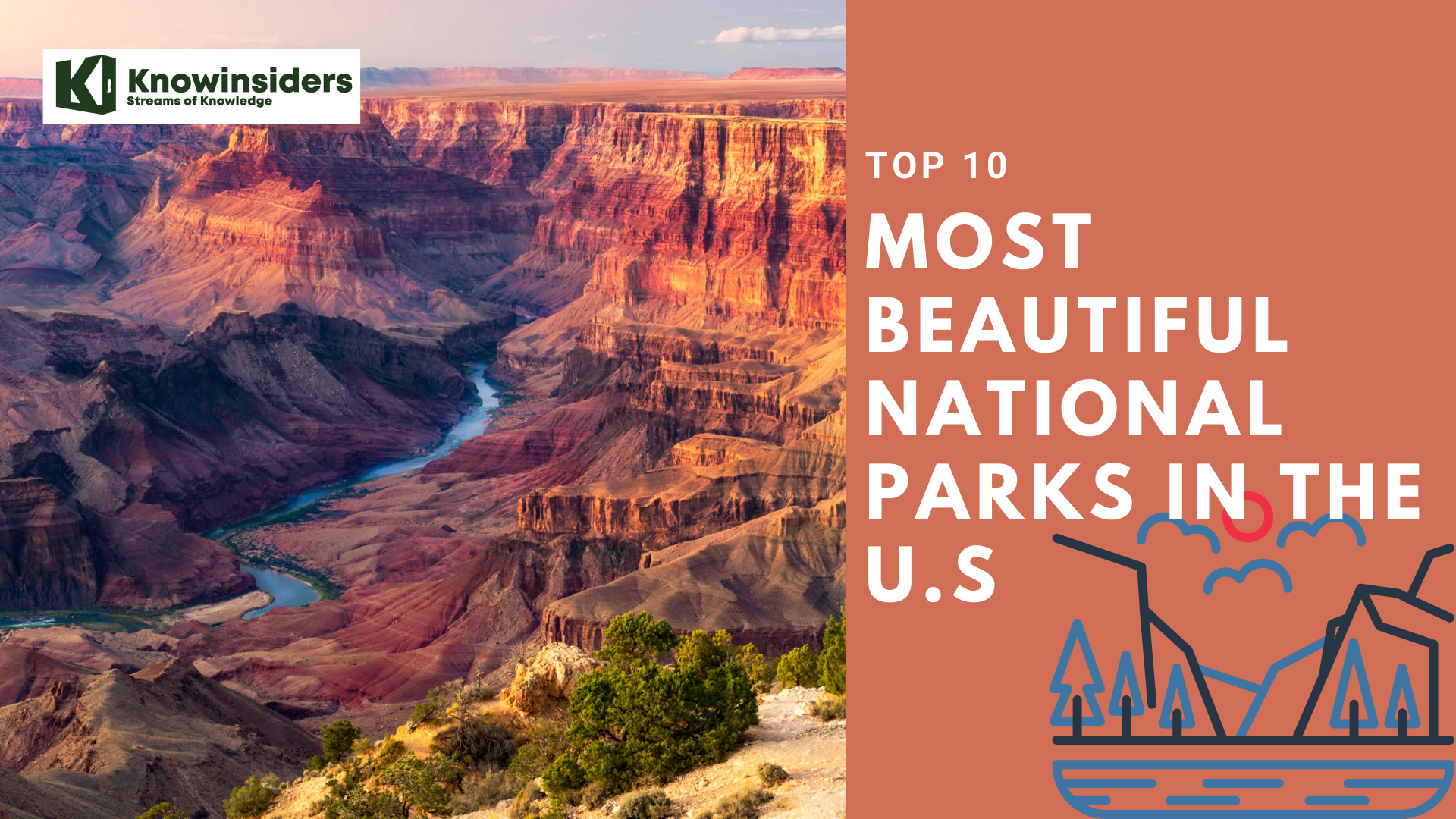 Top 10 Most Beautiful & Popular National Parks in the US Top 10 Most Beautiful & Popular National Parks in the US America is the home for many wonderful natural places, and here is our list of top 10 most beautiful national parks that you can visit ... |
What Are The Best & Most-Loved U.S National Parks in Upcoming Years?
(Updating)
1.Blue Ridge Parkway: 15.9 million
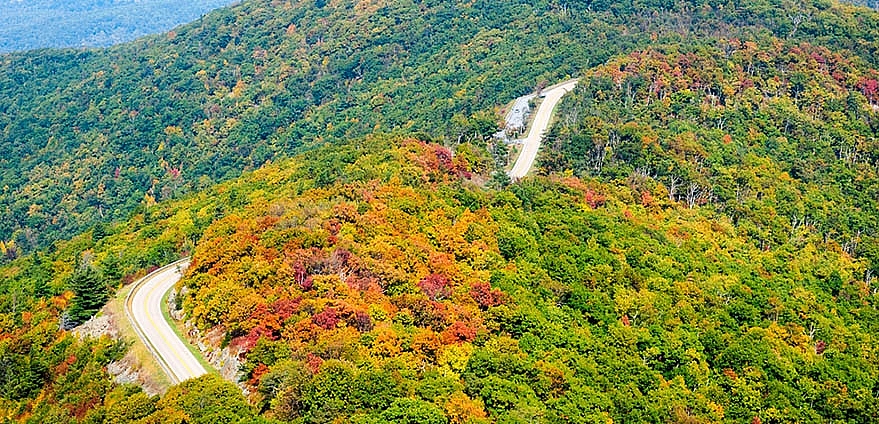 |
| Blue Ridge Parkway Parks |
The Blue Ridge Parkway is known as America's Favorite Scenic Drive. The 469-mile ribbon of road weaves around the peaks of the stunning Blue Ridge Mountains connecting Shenandoah National Park (Virginia) and Great Smoky Mountains National Park (North Carolina). As the Parkway approaches Asheville, it offers breathtaking views of some of the highest peaks east of the Mississippi River and access to the area's best hiking trails. The Parkway is easy to explore with no admission fee and frequent, paved overlooks.
What to know about the Blue Ridge Parkway
- COST: It is FREE to drive the Blue Ridge Parkway. There is no admission fee.
- HOURS: The Blue Ridge Parkway is open 24 hours a day, 7 days a week year-round. However, the Parkway may close due to snow or ice. For real time road information, please see the interactive road closures map on the National Park Service web site.
- HOW TO NAVIGATE: There are stone markers at every mile along the Blue Ridge Parkway. These numbered mile markers are your guide for locating top attractions and overlooks.
- SPEED LIMIT: The Blue Ridge Parkway has a speed limit of 45 MPH, making for a leisurely drive. There are many paved overlooks where you can stop to rest, see the view or take photos.
- GAS: There are no gas stations on the Blue Ridge Parkway. But gas is available just off the Parkway at several major intersections with US or state highways. We recommend filling up your tank before driving on the Parkway.
- VEHICLES THAT CAN DRIVE THE PARKWAY: All non-commercial vehicles are welcome on the Blue Ridge Parkway.
How to get on the Blue Ridge Parkway in Asheville
In the Asheville area, there are four main entrances to the Blue Ridge Parkway. There are roadside signs before and at each of these entrances.
- US Highway 70 and Blue Ridge Parkway Milepost 382.6. Close by: Blue Ridge Parkway Folk Art Center, East Asheville, Interstate 40
- US Highway 74A and Blue Ridge Parkway Milepost: 384.7. Close by: Blue Ridge Park Visitor Center, the town of Fairview, East Asheville, Interstate 40
- US Highway 25 and Blue Ridge Parkway Milepost 388.8: Close by: Biltmore (three miles north), South Asheville
- NC Highway 191 and Blue Ridge Parkway Milepost 393.6: Close by: The North Carolina Arboretum, Asheville Outlets, Interstate 26.
2.Great Smoky Mountains National Park: 14.1 million
Great Smoky Mountains National Park saw 14.1 million visits in 2021, topping the record from 2019 by 1.5 million.
Crossing North Carolina and Tennessee, this park is known for its wildlife, waterfalls, and fog-covered mountains. It's worth visiting year-round for scenic views and outdoor activities like hiking, but the park really shines in autumn, when its trees put on a vibrant display of red, orange, and gold foliage.
The park visitation has increased by 57% over the last decade. The park saw an increase of 40% in frontcountry camping last year, while backcountry camping increased 20%.
The park reported seeing its highest visitation in the summer and fall, peaking in July and October. However, visitation is increasing in the winter and spring at the park that straddles the Tennessee and North Carolina state line.
3.Golden Gate National Recreation Area: 13.7 million
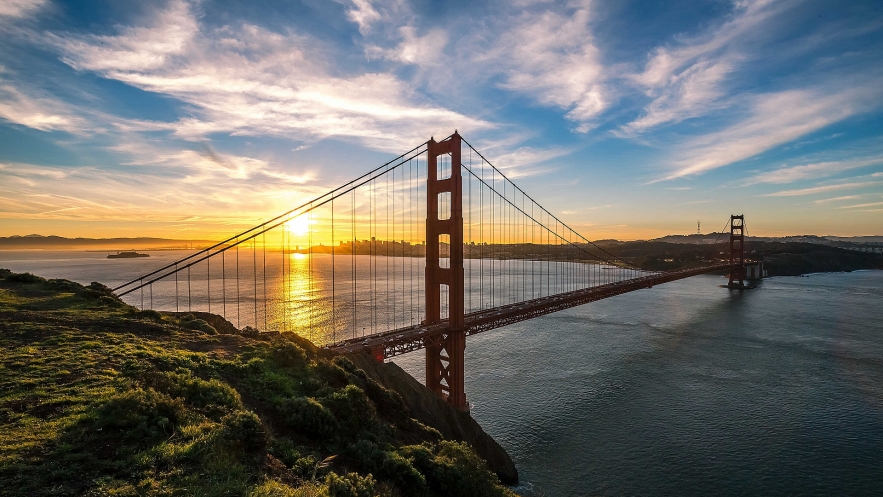 |
| Golden Gate National Recreation Area: 13.7 million |
Golden Gate National Recreation Area is home to Alcatraz Island, the site of pre-Civil War fortifications, and the nation’s first military prison. It was also the site of the occupation that helped ignite the movement for American Indian self-determination.
In 2019, more than 23.5 million visitors visited Golden Gate National Recreation Area, Muir Woods National Monument, Fort Point National Historic Site, Point Reyes National Seashore, and San Francisco Maritime National Historic Park. Visitation to the 419 national parks in 2019 exceeded 300 million recreation visits for the fifth consecutive year. The 327.5 million total is the third highest since record keeping began in 1904.
Golden Gate National Recreation Area hosted over 15 million visitors. Golden Gate National Recreation Area remained the most-visited site in the National Park System ahead of the Blue Ridge Parkway.
4.Gateway National Recreation Area: 9.1 million
Spanning 27,000 acres from Sandy Hook in New Jersey to Breezy Point in New York City, the park is both the gateway from the ocean into New York Harbor, and the gateway to the National Park Service for millions of visitors every year. Gateway offers green spaces and beaches alongside historic structures and cultural landscapes. Every day, Gateway is open for you to explore, envision, and enjoy!
Extending through New York City and New Jersey, opportunities for swimming, boating, fishing, and bicycling are abundant at the Gateway National Recreation Area.
Gateway provides abundant recreational and learning opportunities, from swimming, boating, and fishing to team sports, bicycling, and nature study. The nation's oldest operating lighthouse, forts that defended America, and sites that trace aviation's early days tell significant stories. The living world can be explored in a wildlife refuge, holly forest, ocean dunes, and coastal uplands.
5.Lake Mead National Recreation Area: 7.6 million
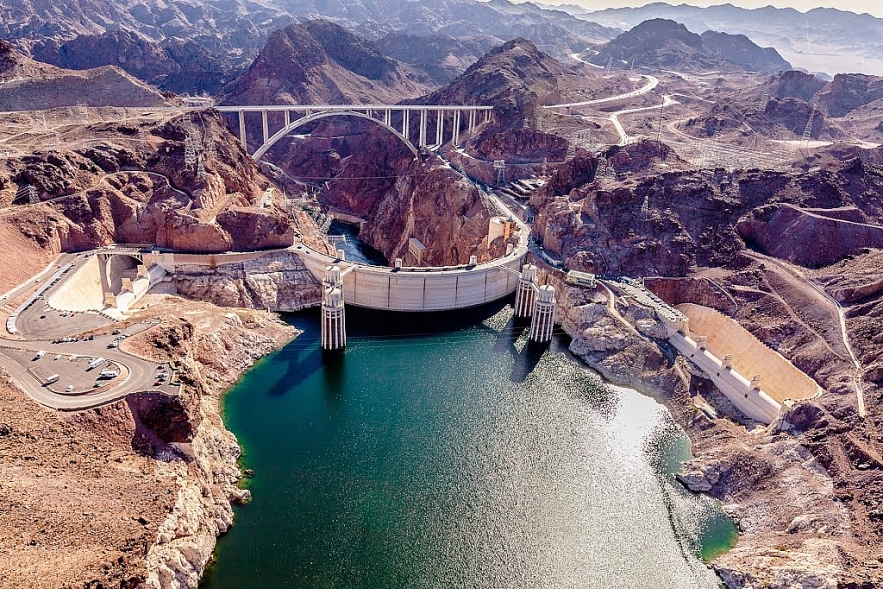 |
| Lake Mead National Recreation Area |
Lake Mead is the largest manmade reservoir in the United States, spanning over 110 miles long in Nevada and Arizona. When Lake Mead is at its fullest, it boasts 759 miles of shoreline, is 532 feet deep, has 247 square miles of surface and an astounding 28 million-acre feet of water. The lake was formed when the United States Bureau of Reclamation selected the narrow Black Canyon section of the Colorado River for the site of what would later be called Hoover Dam.
Lake Mead, Nevada is located on the Colorado River, about 25 miles from the Las Vegas Strip, southeast of Las Vegas, in the states of both Nevada and Arizona. The Lake Mead Reservoir provides water to Arizona, California, Nevada and to parts of Mexico, where farmlands and nearly 20 million benefit from its sustenance.
Originally named after Elwood Mead, the commissioner for the U.S. Bureau of Reclamation, Boulder Dam Recreation Area was established in 1936 and administered by the National Park Service. The name was changed to Lake Mead National Recreation Area in 1964 when Lake Mohave and Shivwits Plateau were added.
While Lake Mead has not reached full capacity in quite some time (1983 to be exact), as of fall 2017, it is at approximately 40% with about 10 million-acre feet of held water. Both Lake Mead and the second largest U.S. reservoir, Lake Powell, compete for capacity bragging rights. As of 2013, Lake Powell is actually in the lead!
There are nine main access points to Lake Mead, NV—on the west, three roads from the Las Vegas metropolitan area, and on the northwest, from Interstate 15 through the Valley of Fire State Park and the Moapa River Indian Reservation to the Overton Arm of the lake.
6.George Washington Memorial Parkway: 6.8 million
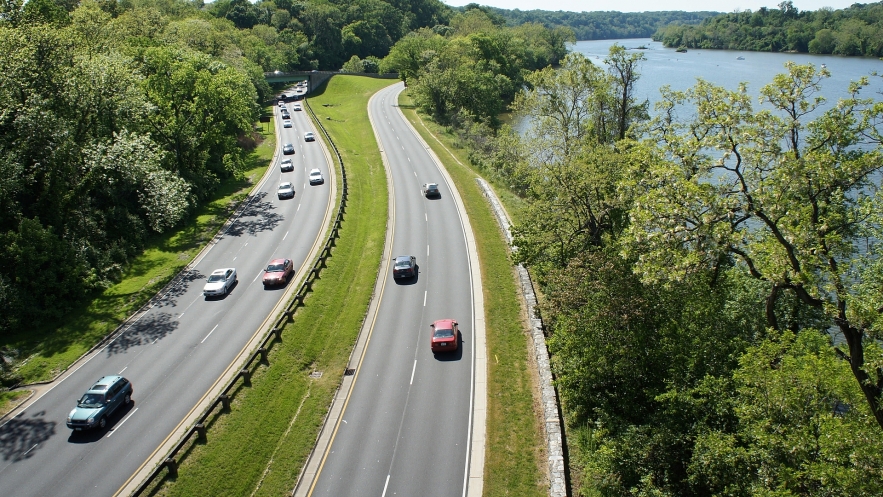 |
| George Washington Memorial Parkway |
Preserving natural scenery along the Potomac River, the George Washington Memorial Parkway connects historic sites from Mount Vernon to Great Falls.
The George Washington Memorial Parkway (GWMP) provides a passageway through pieces of George Washington's life from his home at Mount Vernon, past the nation's capital which he founded, and to the Great Falls of the Potomac where the President demonstrated his skill as an engineer. Developed as a memorial to George Washington, the Parkway may be used on any day to travel to exciting historical, natural, and recreational areas. These places are all linked by this planned and landscaped road, the first section of which was completed in 1932 to commemorate the bicentennial of George Washington's birth.
7.Natchez Trace Parkway: 6.4 million
The 444-mile Natchez Trace Parkway commemorates the ancient trail used by animals and people that connected portions of the Mississippi River to the salt licks in central Tennessee. Though the Trace is traveled year-round, autumn is the best time to experience the brilliant foliage.
Regardless of your interests, there are plenty of opportunities to get out of your car and experience the parkway. There are more than a dozen campgrounds along the Natchez Trace Parkway corridor and numerous opportunities for hiking, biking and horseback riding.
Once the steamboat came on the scene, traffic slowed substantially on the Natchez Trace, and eventually, the dirt road returned to nature. The National Park Service made plans to build the parkway in 1938, but it wasn’t until 2005 that the Parkway as we know it was finally completed.
Today, the Natchez Trace Parkway is a winding, two-lane roadway where bicycles are welcome, pulling over to take a look around is encouraged, and speeding is all but impossible.
8.Lincoln Memorial: 5.8 million
The Lincoln Memorial suits its surroundings so well that it seems to have always been there. The city's master designer, Pierre L' Enfant, could hardly have imagined a better architectural anchor to the west end of the Mall, the grassy area he visualized between the Capitol Building and the Potomac River.
Behind the memorial to the west lies Arlington National Cemetery and the stately Lee-Custis Mansion; to the east you see the Washington Monument and Capitol Hill. The massive sculpture of Lincoln faces east toward a long reflecting pool. The peaceful atmosphere belies the years of disagreement over what kind of monument to build and where.
In 1910 two members of Congress joined forces to create a memorial which honored Lincoln. Shelby M. Cullom and Joseph G. Cannon, who had known Lincoln in Illinois, pushed through a Lincoln Memorial bill which President Taft signed on February 11, 1911. The bill created the Lincoln Memorial Commission to oversee the project and set aside $2 million in funds. The final cost, however, was $3 million.
Before the commission completed plans to build in what was known as the Potomac Flats, it considered various locations and memorial ideas which ranged from a highway to a huge pyramid. John Hay, one of Lincoln's White House secretaries, promoted the Potomac location, saying that the monument should stand alone, distinguished, and serene.
On Memorial Day, May 30, 1922, the building was dedicated, 57 years after Lincoln died. About 50,000 people attended the ceremonies, including hundreds of Civil War veterans and Robert Todd Lincoln, the president's only surviving son. The main speakers were President Warren Harding, former President William Howard Taft, and Dr. Robert Moton, principal of the Tuskegee Institute, who delivered the keynote address.
New York architect Henry Bacon modeled the memorial in the style of a Greek temple. The classic design features 36 Doric columns outside, symbolizing the states in the Union at Lincoln's death. The building measures 204 feet long, 134 feet wide, and 99 feet tall, with 44-foot columns. It blends stone from various states: white Colorado marble for the exterior, Indiana limestone for the interior walls, pink Tennessee marble for the floor, and Alabama marble for the ceiling.
Daniel Chester French, the leading American sculptor of the day, created the famous statue of Lincoln which dominates the interior. He remarked, "We all have an inner consciousness of how Lincoln looked or must have looked, and this was mine." The memorial plans originally specified a 12-foot bronze statue, but it proved out of scale for the huge building. The finished statue is 19 feet tall, carved of 28 blocks of white Georgia marble. French later had special lighting installed to enhance the figure. Visitors sometimes ask if the hands have special significance, such as forming the letter "A" in sign language, but there is no indication French intended it.
9.Gulf Islands National Seashore: 5.5 million
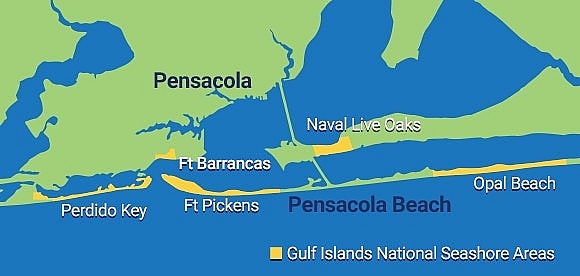 |
| Gulf Islands National Seashore |
Pensacola Beach and Perdido Key both are home to the longest stretch of federally protected seashore in the United States. You'll find endless opportunities for solitude and relaxation and miles of unobstructed views and access to the Gulf. A short hike, bike ride, or kayak trip always ensures a swath of beach, sans humans.
The Seashore offers a wide range of recreational activities including snorkeling, kayaking, hiking, boating, fishing, wildlife viewing, biking, camping, fort tours, ranger-led programs and more. Launch your kayak from one of several waterside parking lots and make your own itinerary. Watch for the gopher tortoise, Atlantic bottlenose dolphin, and more than 300 bird species. Snorkel to see sand dollars, starfish, crabs and fish. Join a ranger-led nature tour to explore life in the brackish marshes or hidden in the shade of tall pines and gnarled live oaks.
Get a unique look into Pensacola's military significance going back before the American Revolution. Explore three forts designed to fortify Pensacola Harbor – Fort Pickens, Fort Barrancas and Fort McRee —all are within the Gulf Islands National Seashore and administered by the National Park Service.
10.Zion National Park: 5 million
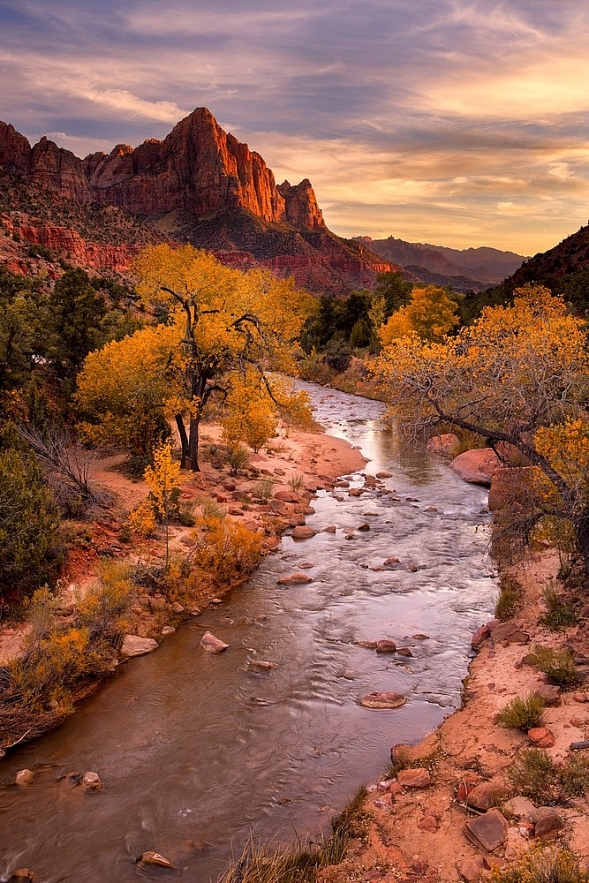 |
| Zion National Park |
Zion is an immensely popular National park located in the southwestern United States in Utah – although this relatively small park only covers an area of 146,000 acres, it is one of the most visited in the state and has some fantastic attractions and features.
One of the main sites within the park is the impressive Zion Canyon – this natural landmark is 15 miles long and has a beautiful colouration from the Navajo Sandstone.
Notable landmarks within the park aside from the canyon include the Kolob Canyons, The Three Patriarchs, Horse Ranch Mountain and the Twin Brothers peaks.
The infrastructure within this park is fantastic and there is a tramline used for transportation and a plethora of information offices and ranches.
11.Chesapeake and Ohio Canal National Historical Park: 5 million
The C&O Canal follows the route of the Potomac River for 184.5 miles from Washington, DC to Cumberland, MD.
The canal operated from 1828-1924 as a transportation route, primarily hauling coal from western Maryland to the port of Georgetown in Washington, DC, Hundreds of original structures, including locks, lockhouses, and aqueducts, serve as reminders of the canal's role as a major Chesapeake transportation system during the Canal Era.
The canal's towpath also provides a nearly level, continuous trail through the spectacular scenery of the Potomac River Valley. Every year millions of visitors come to hike or bike the C&O Canal in order to enjoy the natural, cultural, and recreational opportunities available.
12.Yellowstone National Park: 4.9 million
The world's first national park, Yellowstone National Park was established in 1872, and in 2020, it recorded 3.8 million visits. Throughout its 2.2 million acres, visitors can find a range of unique hydrothermal attractions, including Mammoth Hot Springs, Old Faithful geyser, and Grand Prismatic Spring, as well as waterfalls, lakes, and wildlife.
Most people will have heard of Yellowstone National Park and it is a wonder that this area of natural beauty is not the highest ranked by attendance.
Located in the north western corner of Wyoming, Yellowstone is famous for its epic super volcano system and geyser that is lovingly named “Old Faithful”. Old Faithful erupts like clockwork every 91 minutes and this is a major attraction within the park.
Aside from the volcanic landscapes, Yellowstone also has a varied ecosystem including vast meadows, pine forests and mountains.
This park is undoubtedly the main attraction in Wyoming and the visitors centre and facilities are second to none.
When visiting Yellowstone don’t forget to see the epic Grand Prismatic Spring and the Excelsior Geyser Crater.
13.Grand Canyon National Park: 4.5 million
Often referred to as one of the world's natural wonders, the immense Grand Canyon is a breathtaking sight, so it's no surprise that Grand Canyon National Park is the one of the country's most-visited national parks. Visitors can spend their days here hiking along the canyon's walls, rafting down the Colorado River, taking in the views on a scenic car or train ride, and learning about Native American culture and history.
14.Rocky Mountain National Park: 4.4 million
Covering 415 mountainous square miles, Rocky Mountain National Park is the fourth most-visited. Here, visitors can spot a variety of wildlife, including elk, bighorn sheep, moose, bats, and many others (all from a safe distance, of course), and explore the park's many hiking trails. Rocky Mountain National Park also has a number of scenic drives for visitors who want to see the park's alpine forests, wildflower-covered meadows, and more without leaving their cars.
15.Delaware Water Gap National Recreation Area: 4.3 million
Exiting the park, the river will run 200 miles more to Delaware Bay and the Atlantic Ocean at Wilmington, Delaware. Though set aside as an area for outdoor recreation, the land of this park is rich in history.
The park encompasses significant Native American archaeological sites, and several sites have been investigated. A number of structures also remain from early Dutch settlement and the colonial contact period. The entire region was a frontier of the French and Indian War. Historic rural villages from the 18th and 19th centuries remain intact on the New Jersey side, and landscapes of past settlements are scattered throughout the park.
In the 19th century, the village of Delaware Water Gap was a focus of the early resort industry fostered by the railroads. Even today the region is known for its vacation appeal.
16.Acadia National Park: 4 million
Located on Maine's rocky Atlantic coastline, Acadia National Park saw nearly 2.7 million visitors in 2020. Visitors can explore the park by car on 27 miles of historic motor roads or by foot on 158 miles of hiking trails. Most of the national park is located on Mount Desert Island, where visitors will find the scenic Park Loop Road and picturesque trails perfect for bird-watching just a short distance from the charming town of Bar Harbor.
17.Cape Cod National Seashore: 4 million
 |
| Cape Cod National Seashore |
In 1961, summer native President John F. Kennedy designated the east shore of the Outer Cape a national park. Today, the 40-mile stretch of coast is recognized as having some of the best beaches on Cape Cod, including Nauset Beach in Eastham, Marconi Beach in Wellfleet and Race Point and Herring Cove beaches in Provincetown.
Beyond the shores, there are plenty of hiking and biking trails for you to explore, and two helpful visitor centers that are worth a pit stop. Plus, the seashore is a great place to attend lecture series and take in the spectacular scenery along the beach. Past visitors called sunsets along the shore "magical," and recommend stopping at the visitor centers to learn more about the area.
The Cape Cod National Seashore is open year-round. Official parking lots are open from 6 a.m. to midnight with daily parking stickers costing about $20 a day; $10 for motorcycles; and pedestrian and bicyclist beach entrance fees costing $3 from May through September. An annual pass costs $60. The Salt Pond Visitor Center in Eastham is open every day from 9 a.m. to 5 p.m. year-round, and the Province Lands Visitor Center in Provincetown welcomes visitors from 9 a.m. to 5 p.m. daily, from mid-April through mid-October.
18.Grand Teton National Park: 3.9 million
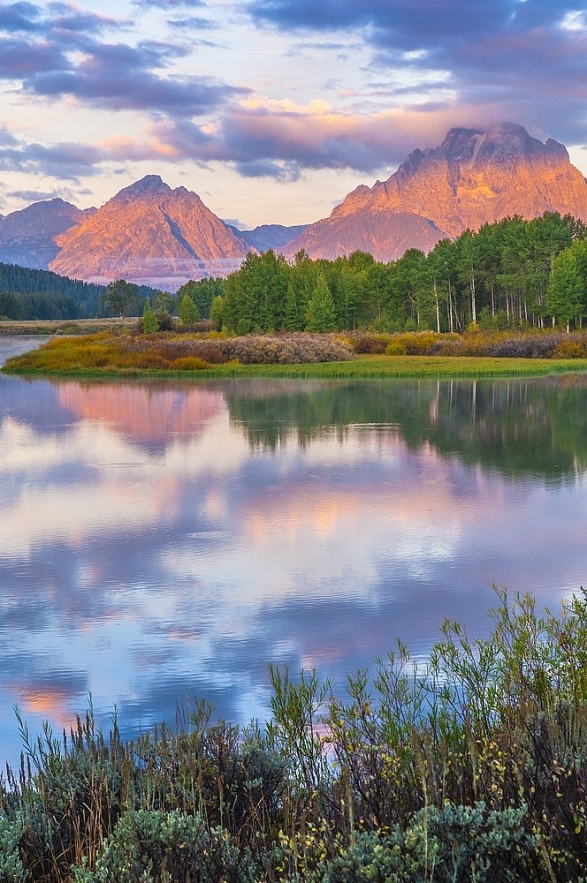 |
| Grand Teton National Park |
The Teton mountain range is a grand landmark in the northern parts of Wyoming and the surrounding region is known as Grand Teton National Park.
This park covers an area of 310,000 acres and lies to the south of Yellowstone National Park.
The Tetons are actually part of the Rock Mountains and this range constitutes a large part of the park.
The other main feature is the immense valley known as Jackson Hole – this valley contains Jackson Lake, the National Elk Refuge and Snake River.
The whole park has a varied ecosystem and you can look at glaciers in the mountains or study wildlife in the forests and plains.
Grand Teton offers a range of hiking opportunities and scenic drives.
19.World War II Memorial: 3.7 million
The World War II Memorial honors the 16 million who served in the armed forces of the U.S., the more than 400,000 who died, and all who supported the war effort from home. Symbolic of the defining event of the 20th Century, the memorial is a monument to the spirit, sacrifice, and commitment of the American people. The Second World War is the only 20th Century event commemorated on the National Mall’s central axis.
The memorial opened to the public on April 29, 2004 and was dedicated one month later on May 29. It is located on 17th Street, between Constitution and Independence Avenues, and is flanked by the Washington Monument to the east and the Lincoln Memorial to the west. The memorial is operated by the National Park Service and is open to visitors 24 hours a day, seven days a week. For more information about visiting the memorial, accessibility, parking, directions, special events and other details, please visit the National Park Service Web site at www.nps.gov/nwwm or call the Park Service at 202-208-3818.
20.Vietnam Veterans Memorial: 3.6 million
The Vietnam Veterans Memorial on the National Mall pays tribute to the brave members of the U.S. Armed Forces who fought in the Vietnam War and were killed or missing in action. The memorial consists of three separate parts: The Three Soldiers statue, the Vietnam Women’s Memorial and the Vietnam Veterans Memorial Wall, also known as The Wall That Heals, which is the most popular feature.
The memorial is free and open to the public 24 hours a day, with rangers on duty to answer questions from 9:30 a.m. to 10 p.m. daily. Interpretive programs are provided throughout the day and upon request.
You’ll find the memorial located near Constitution Gardens on the National Mall. The closest Metro stops are Foggy Bottom or Federal Triangle on the Orange, Blue and Silver lines. Visitors can also get to the memorial via the DC Circulator’s National Mall route and Metrobus routes 32, 34 and 36.
The Vietnam Veterans Memorial Wall provides one of the National Mall’s most powerful scenes. In truth, the “wall” is actually made up of two identical walls that each stretch 246 feet and 9 inches, containing more than 58,000 names. The names are listed in chronological order based on the date of casualty, and within each day, names are shown in alphabetical order.























